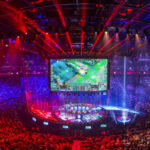The advent of Non-Fungible Tokens (NFTs) has ushered in a new era in the art world, revolutionizing how we create, buy, and sell art. This transformative technology is not just changing the art market; it’s redefining the value and ownership of digital art, making waves across traditional boundaries.
A New Frontier in Art Ownership
NFTs have emerged as a powerful tool in the digital art space, providing a unique way to authenticate and own digital assets. By leveraging blockchain technology, NFTs ensure the uniqueness and scarcity of digital art pieces, thus, turning them into valuable collectibles. Artists now encode their work as NFTs, allowing them to sell their digital creations as one-of-a-kind pieces. This shift not only expands the market for digital artists but also offers them a new avenue for recognition and revenue.
Furthermore, collectors can now boast of owning original digital art, similar to possessing physical art pieces. This sense of ownership comes with benefits such as exclusive access to the artist’s work and participation in a global community of art enthusiasts. As a result, NFTs are bridging the gap between digital and physical art collecting, opening up a world of possibilities for artists and collectors alike.
Democratizing the Art World
One of the most significant impacts of NFTs is their role in democratizing the art world. Previously, the traditional art market was often criticized for being exclusive and inaccessible to the average artist or collector. NFTs, however, have leveled the playing field. Now, any artist can mint an NFT and sell it directly to the public without the need for galleries or auction houses. This direct-to-consumer approach not only reduces barriers to entry but also allows artists to retain a larger portion of their sales.
Moreover, the transparent nature of blockchain technology provides a clear record of ownership and provenance, making it easier to verify the authenticity of digital art. This transparency builds trust in the digital art market and encourages more people to participate, further democratizing access to art.
Transforming Art into an Experience
NFTs are also changing how we experience art. Beyond simply owning a digital file, NFT owners often gain access to exclusive content, events, and experiences. Artists are now experimenting with interactive and immersive art pieces, integrating VR (Virtual Reality) and AR (Augmented Reality) to create multi-dimensional experiences. These innovations are not just transforming the art itself but also how we engage with it.
This experiential aspect of NFTs adds a new layer of value, making art more than just a visual delight. It becomes a gateway to new worlds and experiences, enriching the relationship between the artist and the audience. As such, NFTs are paving the way for a more interactive and engaging art world, where the boundaries of creativity are constantly being pushed.
Challenges and Criticisms
Despite the excitement around NFTs, they have not been without criticism. Concerns about the environmental impact of blockchain technology, issues with copyright infringement, and the speculative nature of the NFT market are prominent. These challenges highlight the need for sustainable practices, clearer regulations, and a balanced approach to valuing art in the digital age.
However, as the technology evolves, solutions to these challenges are emerging. Efforts to reduce the carbon footprint of blockchain networks and implement more robust copyright protection measures are underway. These developments are crucial for ensuring the long-term viability and ethical sustainability of the NFT space.
The Road Ahead
As we look to the future, it’s clear that NFTs are not just a passing trend but a fundamental shift in the art world. They are redefining what art is, how it’s valued, and who gets to participate in its creation and collection. As the technology matures and the community around it grows, we can expect to see even more innovative and transformative changes.
The digital art revolution is here, and NFTs are at its forefront. By embracing this new wave, artists, collectors, and enthusiasts are not just witnessing a change in the art world; they are actively shaping its future. With every NFT minted and collected, the boundaries of art expand, opening up new horizons for creativity and connection in the digital age.
In conclusion, NFTs are more than just digital assets; they are the catalysts for a global movement that is changing the art world. By democratizing access, enhancing ownership, and transforming art into an experience, NFTs are not only revolutionizing the art market but also enriching our cultural landscape. As we continue to explore this new frontier, one thing is certain: the art world will never be the same again.

